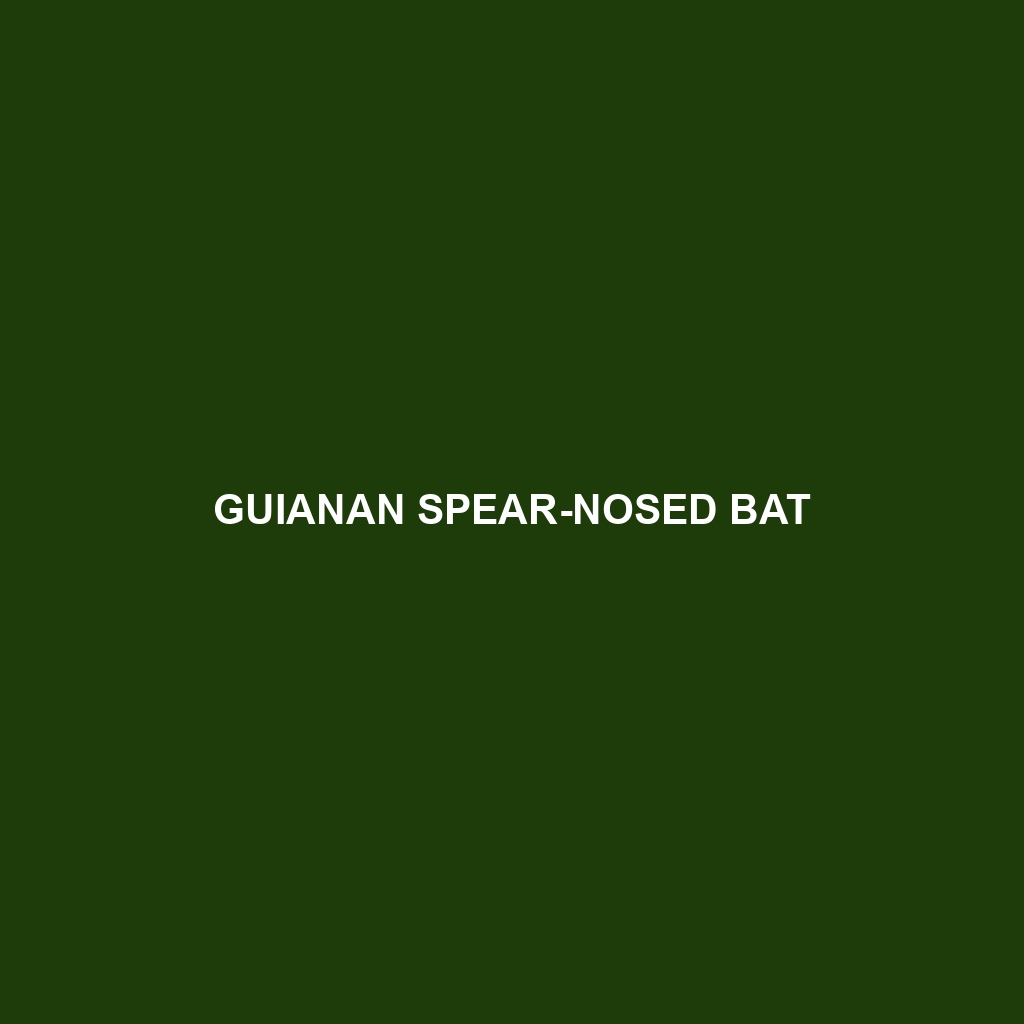Greater Spear-nosed Bat
Common Name: Greater Spear-nosed Bat
Scientific Name: Phyllostomus hastatus
Habitat
The Greater Spear-nosed Bat is primarily found in the tropical and subtropical regions of Central and South America. This species thrives in a variety of habitats, including rainforests, dry forests, and savannas. They are commonly located in areas with dense vegetation, which provides ample roosting sites and foraging opportunities.
Physical Characteristics
Measuring approximately 10 to 13 centimeters in body length, the Greater Spear-nosed Bat has a wingspan of about 30 to 40 centimeters. This species exhibits a distinctive long, narrow skull with a prominent spear-shaped nose, which is a defining feature. Their fur is usually a mix of brown and gray, providing excellent camouflage against tree bark and foliage. Additionally, they have large ears and a relatively robust body, which can help in auditory perception.
Behavior
The Greater Spear-nosed Bat is primarily nocturnal, engaging in active foraging during the night. These bats are social creatures, often roosting in large colonies that can range from several individuals to hundreds. They exhibit fascinating mating behaviors, including elaborate courtship rituals. When foraging, they employ echolocation to navigate through their environments, locating prey efficiently under low-light conditions.
Diet
As insectivorous bats, the Greater Spear-nosed Bat primarily feeds on a diet of insects, including moths, beetles, and other nocturnal flying insects. Their exceptional ability to catch prey mid-flight is facilitated by their agile maneuvers and keen senses. During certain seasons, they may also supplement their diet with nectar and fruits, contributing to pollination and seed dispersal.
Reproduction
The reproductive season for the Greater Spear-nosed Bat typically occurs during the warmer months, from late spring to summer. Females usually give birth to a single offspring after a gestation period of about three months. Maternal care is prominent, as mothers nurse their young and teach them essential survival skills until they can fledge and begin foraging independently.
Conservation Status
Currently, the Greater Spear-nosed Bat is classified as “Least Concern” by the International Union for Conservation of Nature (IUCN); however, habitat destruction and environmental changes pose significant threats. Monitoring efforts are essential to ensure this species remains stable, especially in regions facing deforestation.
Interesting Facts
The Greater Spear-nosed Bat is known for its unique ability to adapt to urban environments, often roosting in human-made structures. Moreover, they play a crucial role in their ecosystems by acting as pollinators and seed dispersers, influencing plant biodiversity.
Role in Ecosystem
This bat species serves an important role in maintaining ecological balance by controlling insect populations and assisting with plant reproduction through pollination. The Greater Spear-nosed Bat’s interactions with flowering plants and its influence on fruit production are vital for the health of its natural habitats, making its conservation significant for biodiversity.
